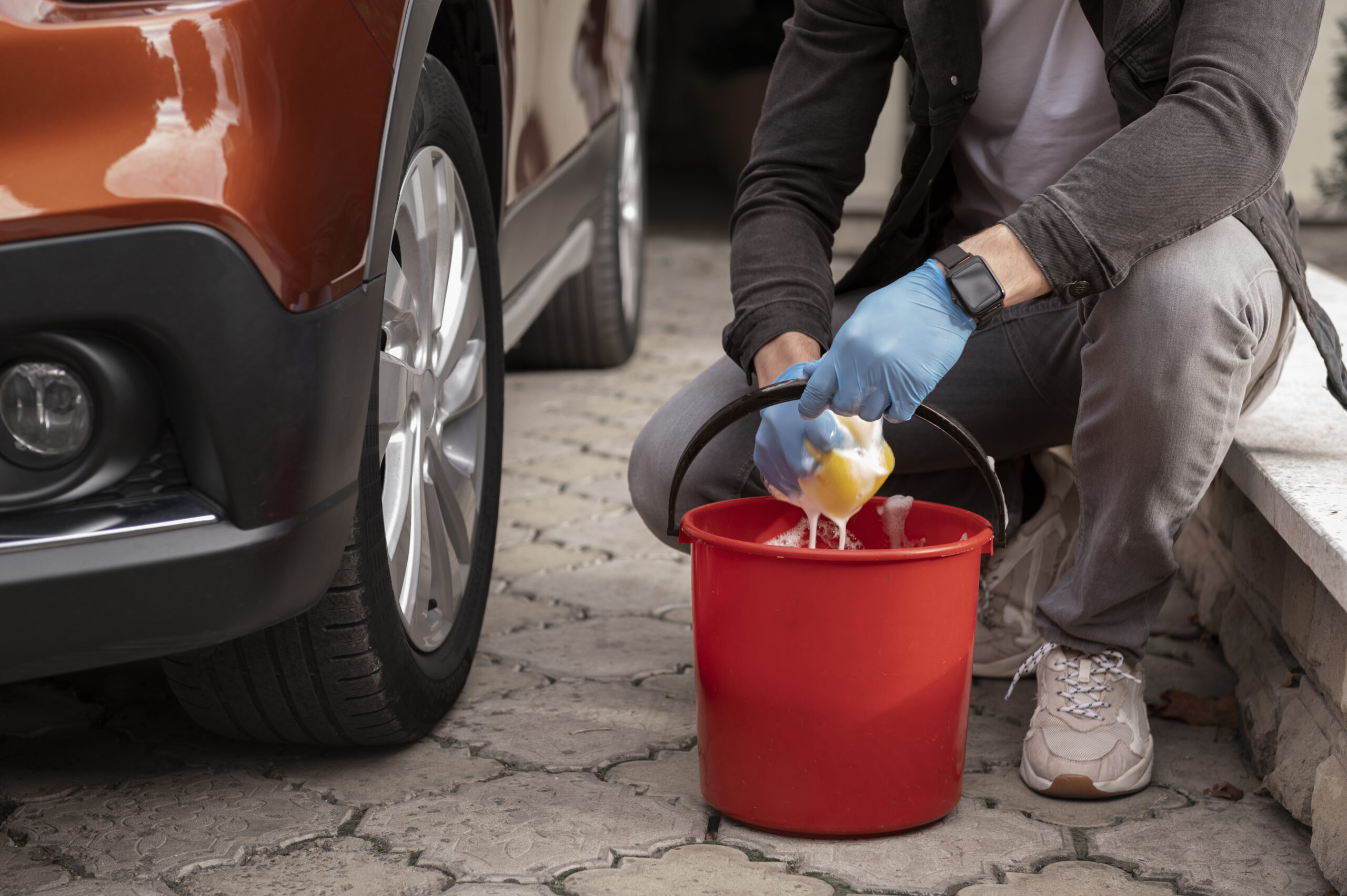Wondering how you can wash a car with a bucket of water? Washing your car with just a bucket of water may sound like a simple task, but it requires a bit of technique to get a sparkling clean finish without damaging the paint or wasting water. Whether you’re facing a water restriction or simply want a minimalist approach,
this guide will walk you through the steps of washing your car effectively with only a bucket of water. Using the right tools and methods, you can keep your vehicle looking its best while saving water. Here’s how to do it:
Step 1: Gather Your Materials
To start, you’ll need a few essential tools and supplies:
- Two buckets: One for clean soapy water and one for rinsing. A two-bucket method helps avoid rubbing dirt back onto your car’s surface.
- Car wash soap: Avoid using dish soap or household cleaners, which can strip your car’s protective wax. Use a soap specifically designed for cars.
- Microfiber wash mitt: Gentle on paint, it helps remove dirt without scratching the surface.
- Wheel brush: To clean your wheels thoroughly.
- Drying towel: A large, soft microfiber towel will help you dry the car without leaving streaks or scratches.
Step 2: Prepare Your Car
Before you begin, ensure your car is parked in a shaded area. Direct sunlight can cause water to dry too quickly, leaving streaks or water spots on your car’s surface. If the car is hot to the touch, let it cool down first.
Step 3: Rinse Off Loose Dirt
Even though you’re working with just a bucket, it’s crucial to get rid of loose dirt and debris first. Use a spray bottle filled with water or a gentle splash from your bucket to rinse off the car. You can also use a pump sprayer, which mimics the effect of a hose with less water consumption.
If you’re short on tools, simply splash water from the bucket onto your car. Pay special attention to areas with heavy grime, like the wheels and lower panels.
Step 4: Use the Two-Bucket Method
To minimize the chances of scratching your paint, use the two-bucket method. One bucket should contain soapy water and the other plain water for rinsing your wash mitt.
- Dip your wash mitt in the soapy water, and gently clean one section of the car at a time. Always start from the top and work your way down since the lower part of the car is often the dirtiest.
- Rinse the mitt in the plain water before dipping it back into the soapy water. This removes dirt particles and prevents them from scratching the paint when you continue washing.
Step 5: Clean the Wheels
Use a separate brush or sponge to clean your wheels, as they often accumulate brake dust, road grime, and grease. Dunk your wheel brush into the soapy water, scrub each wheel thoroughly, and then rinse the brush in the clean water before repeating. This ensures you’re not reapplying grime.

If your wheels are especially dirty, you might need a specific wheel cleaner. However, car wash soap often works fine for regular maintenance.
Step 6: Rinse the Car
Without a hose, you’ll need to rely on your bucket to rinse the car. Fill your bucket with clean water (no soap), and use a soft, clean cloth or a pump sprayer to gently pour water over the sections you’ve washed. Work methodically, ensuring you remove all soap residue to avoid streaking.
Be patient with this process, as it’s more time-consuming than using a hose. Ensuring all soap is rinsed off will make a big difference in the final result.
Step 7: Dry the Car
Once the rinsing is complete, dry your car immediately to prevent water spots. Use a clean, soft microfiber towel, and gently blot or wipe the surface. Move in straight lines instead of circles, which can create swirl marks on the paint.
Focus on drying areas where water tends to accumulate, like mirrors, door handles, and windows. Don’t forget to dry the wheels to prevent brake dust from sticking to the damp surface.
Step 8: Optional: Apply Wax or Polish
To protect the paint and keep your car looking shiny, consider applying wax or polish. While this isn’t necessary every time you wash your car by hand, doing so once every few washes can provide a protective layer that repels dirt and water.
Use a wax or polish specifically designed for cars, and follow the instructions on the product. Applying by hand with a microfiber cloth is usually the best way to get an even coat.
Final Thoughts
Washing a car with just a bucket of water may seem restrictive, but with the right approach, it can be just as effective as a full hose-and-foam method. By using the two-bucket system, focusing on cleaning one section at a time, and drying the car carefully, you’ll achieve a clean, shiny finish without unnecessary water waste.
This method is not only environmentally friendly, but it’s also a great way to keep your vehicle looking great while adhering to any local water restrictions or conserving water. With the right techniques and a bit of patience, your car will be spotless and ready to hit the road.
Discover more from Chikwem
Subscribe to get the latest posts sent to your email.